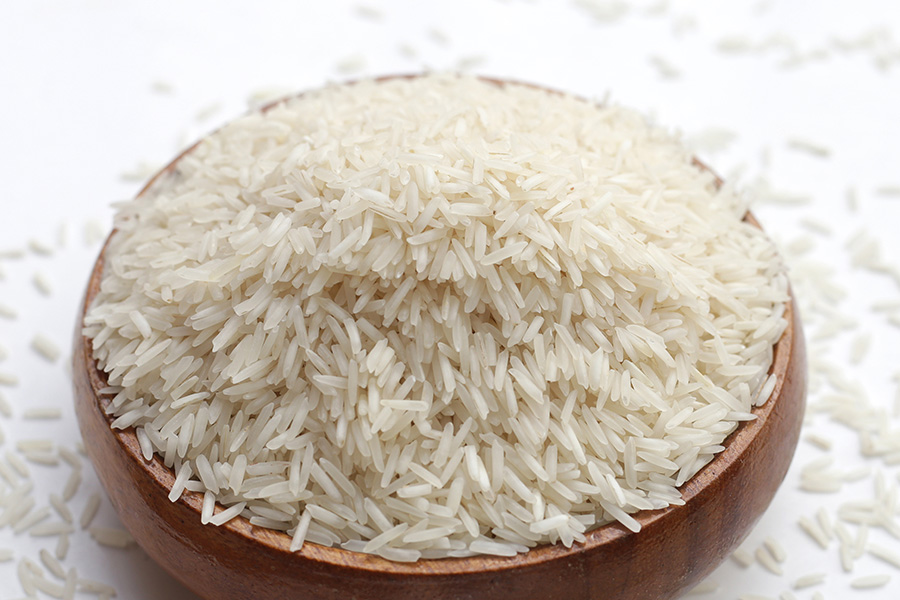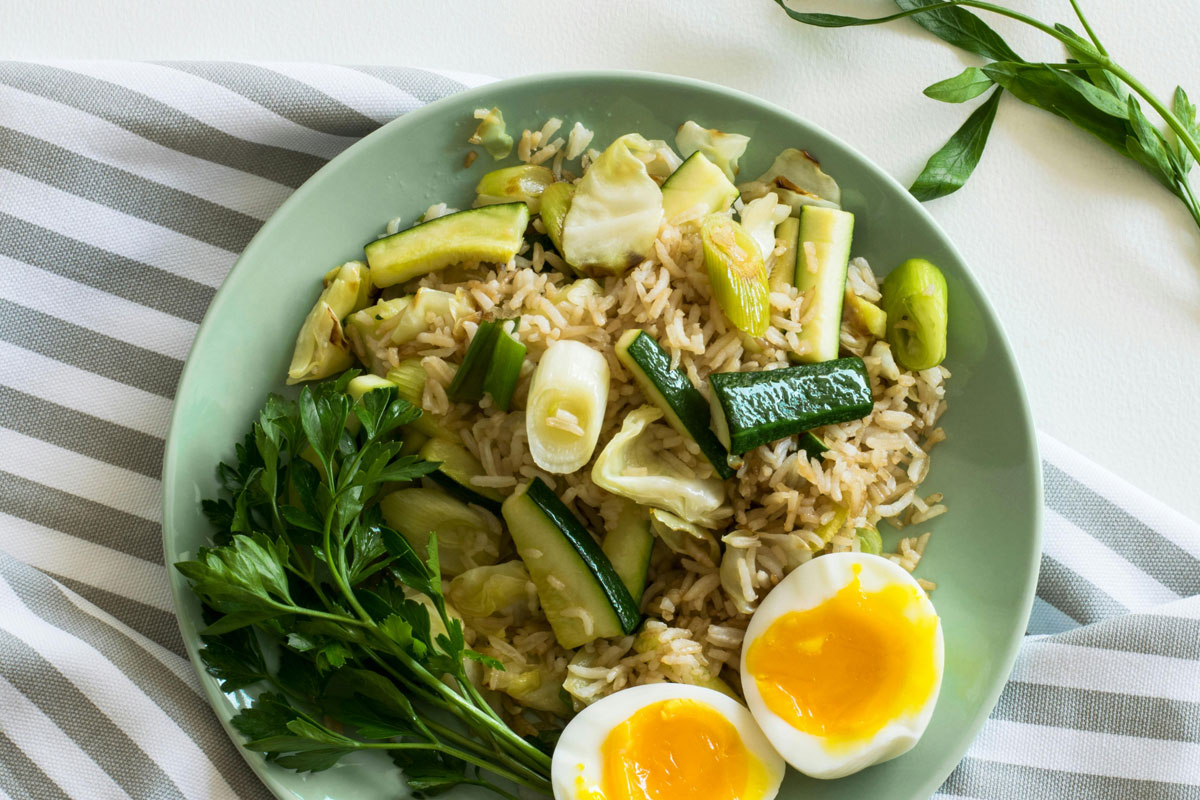Production and Types of White Rice
White rice is produced through a milling process that removes the outer layers of rice grains. There are several types of white rice, each with unique characteristics:
- Long-Grain White Rice: This type of rice has slender, elongated grains. When cooked, the grains remain separate, resulting in a light and fluffy texture. It is commonly used in dishes like pilaf, fried rice, and as a side dish in many cultures.
- Medium-Grain White Rice: Medium-grain rice has a shorter, more plump appearance. It tends to be moist and slightly sticky when cooked, making it ideal for dishes such as risotto and rice pudding.
- Short-Grain White Rice: Known for its sticky, almost glutinous texture, short-grain white rice is often used in dishes where cohesion is important, such as sushi or rice balls (onigiri).
Nutritional Profile of White Rice
White rice is mostly composed of carbohydrates, primarily in the form of starch. It is low in fat and protein compared to other grains. While the milling process reduces its fiber content, white rice is often enriched with vitamins and minerals such as:
- Iron
- Niacin (Vitamin B3)
- Thiamin (Vitamin B1)
- Folate (Vitamin B9)
A typical serving of cooked white rice (about 1 cup) contains:
- Calories: 200
- Carbohydrates: 45g
- Protein: 4g
- Fat: 0g
- Fiber: 0.5g
The nutritional content can vary slightly based on the type of white rice and whether it’s been enriched.
Culinary Uses of White Rice
White rice is highly versatile and serves as a foundation for a wide array of global dishes. Some notable uses include:
- Steamed White Rice: A common side dish in Asian and Western cuisines.
- Rice Pilaf: A fragrant dish where rice is sautéed with spices and cooked in broth.
- Fried Rice: A popular stir-fried dish combining rice with vegetables, proteins, and sauces.
- Rice Pudding: A dessert made by boiling white rice in milk or cream and sweetened with sugar.
Preservation of White Rice
Preserving white rice properly can help extend its shelf life and prevent spoilage. There are several methods for storing both uncooked and cooked white rice:
Storing Uncooked White Rice
Uncooked white rice has a relatively long shelf life when stored correctly:
- Pantry Storage: In a dry, cool place, white rice can last for up to 4-5 years if stored in an airtight container to protect it from moisture, pests, and contaminants.
- Vacuum Sealing: For extended preservation, vacuum-sealing rice helps remove oxygen and reduce the chances of spoilage, extending its shelf life even further.
- Freezing: Freezing uncooked rice in airtight freezer bags can extend its storage life indefinitely. Freezing is particularly useful in humid climates where rice may absorb moisture.
Preserving Cooked White Rice in the Fridge
Cooked white rice should be handled carefully to prevent bacterial growth, particularly the bacteria Bacillus cereus, which can cause food poisoning. Here’s how to preserve cooked rice:
- Cool Quickly: Once rice is cooked, cool it quickly by spreading it out in a shallow dish. Allow it to come to room temperature within 1 hour.
- Refrigerate Immediately: Transfer the cooled rice to an airtight container and place it in the refrigerator. Cooked rice will last for 3-5 days in the fridge.
- Label and Date: Always label and date stored rice to ensure it is consumed within a safe timeframe.
Reheating Refrigerated Rice
When reheating refrigerated rice, make sure it reaches a steaming temperature of at least 165°F (74°C) to kill any bacteria. Add a splash of water and cover the rice to retain moisture while reheating in a microwave or stovetop.
Other Methods of Preserving Cooked White Rice
- Freezing Cooked White Rice: Cooked rice can be frozen for up to 6 months in freezer-safe bags or containers. Ensure the rice is properly cooled and portioned before freezing. When reheating, use a microwave or stovetop to thaw and warm the rice thoroughly.
- Vacuum-Sealing Cooked Rice: Vacuum-sealing cooked rice before freezing it can help maintain texture and freshness by minimizing exposure to air.
Risks and Considerations in White Rice Preservation
- Moisture: Uncooked white rice can absorb moisture from the environment, leading to mold or spoilage. It’s crucial to keep rice in airtight containers, particularly in humid climates.
- Bacterial Growth: Cooked white rice is prone to bacterial contamination, especially if left at room temperature for more than two hours. It’s essential to refrigerate or freeze rice promptly after cooking.
Health Considerations and Alternatives
While white rice is a staple in many diets, it is lower in fiber and nutrients compared to whole grains like brown rice. Diets high in refined grains, like white rice, can lead to quicker spikes in blood sugar levels. For individuals managing diabetes or looking for more nutrient-dense options, alternatives such as brown rice, quinoa, or cauliflower rice might be considered.
That said, white rice remains a digestible and easy-to-prepare grain, often recommended for people with digestive sensitivities or for those recovering from illness due to its bland flavor and easy digestibility.
Conclusion White rice, despite its lack of fiber compared to whole grains, is a versatile and popular carbohydrate source consumed across the globe. Proper preservation techniques, such as using airtight containers, refrigeration, and freezing, can help extend its shelf life and maintain its quality. When preparing and storing white rice, it’s important to handle it properly to prevent bacterial growth and ensure safe consumption.

How long does white rice last in the fridge?
How Long White Rice Lasts in the Fridge: A Detailed Guide White rice is a popular staple food enjoyed around the world due to its versatility and ease of preparation. After cooking, many people wonder how long it remains...

How long does brown rice last in the fridge?
How Long Brown Rice Lasts in the Fridge: A Detailed Guide Brown rice is a nutritious and fiber-rich whole grain that is often preferred over white rice for its health benefits. However, because it retains its bran and germ...

How long does basmati rice last in the fridge?
How Long Basmati Rice Lasts in the Fridge? A Comprehensive Guide to understanding how long basmati rice will last when refrigerated. Basmati rice, celebrated for its long grains, fragrant aroma, and delicate flavor, is a...

How long does jasmine rice last in the fridge?
How Long Jasmine Rice Lasts in the Fridge: A Comprehensive Guide Jasmine rice, known for its fragrant aroma and soft, slightly sticky texture, is a staple in many Southeast Asian cuisines. Whether served alongside curries...

How long does wild rice last in the fridge?
How Long Wild Rice Lasts in the Fridge: A Comprehensive Guide Wild rice, an aquatic grass native to North America, is often celebrated for its earthy flavor, chewy texture, and nutrient density. It’s commonly used in...

How long does fried rice last in the fridge?
How Long Fried Rice Lasts in the Fridge: A Comprehensive Guide Fried rice, a popular dish made by stir-frying cooked rice with vegetables, meats, and seasonings, is a delicious and convenient meal that can be enjoyed as...

How long does cooked rice last in the fridge?
How Long Does Cooked Rice Last in the Fridge: A Complete Guide Cooked rice is a versatile and popular food used in a variety of dishes worldwide, from simple side dishes to elaborate stir-fries and pilafs. While rice is...

How long does long grain rice last in the fridge?
How Long Long-Grain Rice Lasts in the Fridge: A Comprehensive Guide Long-grain rice is one of the most popular varieties of rice, known for its slender grains and fluffy texture when cooked. Commonly used in dishes like...
